The world has been changed in many ways by early inventions in the agricultural sector and its allied sectors. This is a list of 25 early inventions of agriculture and its allied sectors that changed the world forever.

The Agricultural Revolution, which took place from the 16th to 18th centuries, made farming more efficient and profitable. The Industrial Revolution, which occurred from the 18th to the 20th centuries, increased productivity by making processes easier and more efficient. Today, Advancements in agricultural technology have further transformed our relationship with food. While our food production and access have increased greatly over the past few centuries, environmental impact has also become a growing concern.
The Industrial Revolution saw the development of tools such as the steam engine, and the water pump, and the various improvements in farming equipment that increased productivity in the fields and helped reduce the time required to farm a crop.
1. CLOTHING: (400,000 B.C.E)
Early humans cover their nakedness.

Around 400,000 years ago, Homo sapiens devised a solution to protect the vulnerable naked human body from the environment - clothes.
It is believed that the earliest clothing was made from the fur of hunted animals or leaves creatively wrapped around the body to keep out the cold, wind, and rain.
Clothing has changed dramatically over the centuries, although its ancient role as an outward indication of the wearer's social status, wealth, and beliefs is as important as ever.
In the 21st century, mechanization has allowed sophisticated practical clothing to be devised to protect us from the dangers such as extreme weather, chemicals, insects, and outer space.
Without clothes, we would not have been able to explore and exploit our world and the surrounding universe to the extent that we have.
2. IRRIGATION (6000 B.C.E):
Sumerians pioneer watering channels.
It is unknown who first irrigated his crops with water brought specially from a nearby river, but archeological evidence suggests that, whenever farming began to take place, irrigation soon followed.

The first farmers in Mesopotamia planted their crops of barley, wheat, and other plants near the Tigris or euphrated river, they relied on rain, the occasional flood, and the ability of the soil to hold water to ensure that their crops grew from seed to harvest.
Water could be carried in buckets from the river, but if the rain stopped and there was a lengthy drought, the crops would die.
The water was either diverted from a major river through canals and drainage ditches that flowed alongside the fields, or it was stored in reservoirs and ponds that were refilled in times of flood and distributed from these.
The effect of this irrigation was to extend the area of fertile land from just narrow strips on either side of a river to a wide band that could be several miles across.
3. SCRATCH PLOW (5500 B.C.E):
Mesopotamians invent a groundbreaking tool.
Around 9500 B.C.E. in several populations distant from one another, people began to select and cultivate plants for food and other purposes.
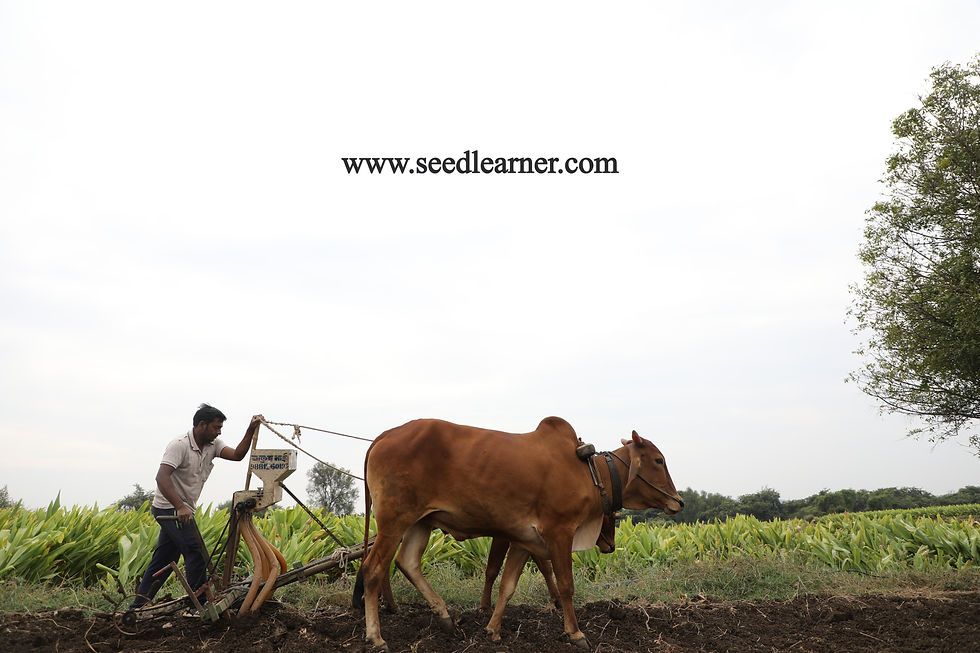
These people were the first farmers.
In what is now known as the Fertile Crescent in Southwest Asia, a small population engaged in farming and began to grow the eight founder crops of agriculture. Such as -emmer and einkorn wheat, hulled barley, bitter vetch, peas, chickpeas, lentils, and flax.
However, it took thousands of years before farmers developed the practices and technologies necessary to enable the cultivation of land on a larger scale.
The first plow, a tool used to prepare the soil for planting, was developed in Mesopotamia by the Indus Valley civilization. It is known as the scratch plow and represented one of the greatest advances in agriculture.
It consisted simply of a wooden stick attached to a wooden frame but was able to aerate the soil and scratch a furrow to allow the planting of seeds.
The plow was pulled by domesticated oxen and left strips of undistributed earth between each plowed row.
The squarish fields that resulted are known to archeologists as "Celtic fields".
However, in India farmers continue to use the primitive plow to introduce organic materials into soils that have been cultivated for up to 2,000 years.
4. PESTICIDE (2500 B.C.E):
Sumerians use sulfur to protect their crops from rodents and insects.
Humans are still unable to control the climate, but solutions to other problems were proposed in the most ancient of times.
Relying on the success of an annual crop was risky. Poor weather, an infestation of insects, or crop disease could ruin the harvest and starve a population.
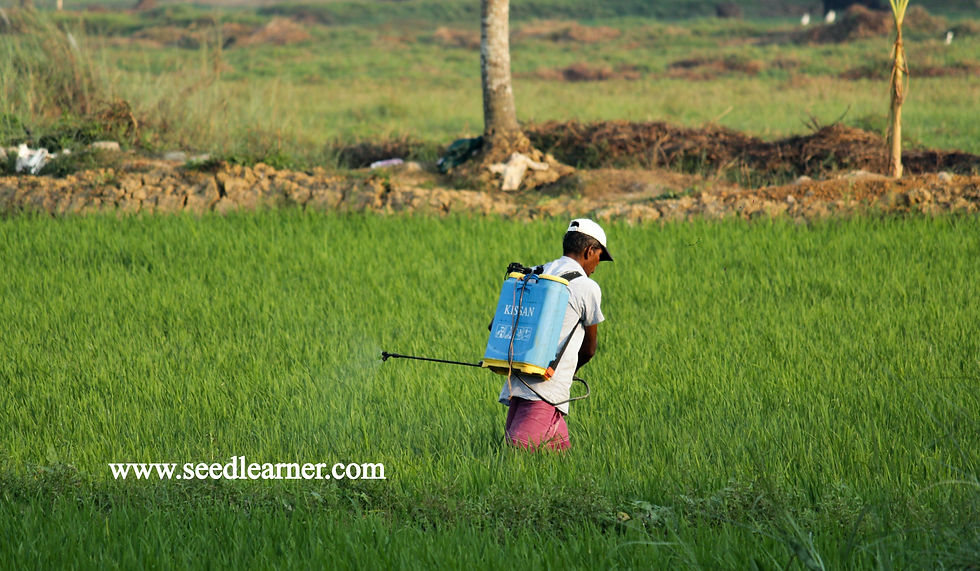
Early attempts to limit the damage by pests were physical interventions such a crop rotation, and the manual removal of grubs.
The Sumerians had developed a sophisticated agriculture system using elemental sulfur to ward off the insects.
Sprinkling sulfur on these plantations could ward off fungi, rodents, and insects such as locusts.
Natural methods of eliminating pests dominated until World War 2, when the chemical DDT was first used to kill mosquitoes in a bid to reduce the diseases they spread, such as malaria and typhus.
Today, around 2.5 million tons of chemical pesticides are used around the world annually.
However, alternative technologies fear toxic effects on humans, and a renewed interest in organic farming and natural pesticides is reducing our reliance on chemical pesticides.
5. MOULD PLOW (300 B.C.E):
The Chinese transform a farm implement.
The simple moldboard plow was one of the most significant developments in history, but the name of its inventor is lost in time.

When humans first began tilling their fields, they would simply drag a stick or hoe through the soil.
The resulting furrows were perfect for planting seeds for cultivation.
Once the earth had been cut horizontally, the forward motion of the curved plowshare pushed the soil against the blade, which turned the soil upside down before depositing it back on the ground, to the side of the new furrow.
This aerated the soil, but it was the inverting of the earth that brought new advantages.
Any surviving weeds were buried by the inverted earth and, especially in dry soil, nutrients, and moisture was brought back to the surface.
6. SPINNING WHEEL (700 A.D):
Indians accelerate the spinning process.
The origins of the spinning wheel remain unsure, but the machine is thought to have been invented around 700 in India, where it was turning fibers into thread or yarn that were then woven into the cloth.
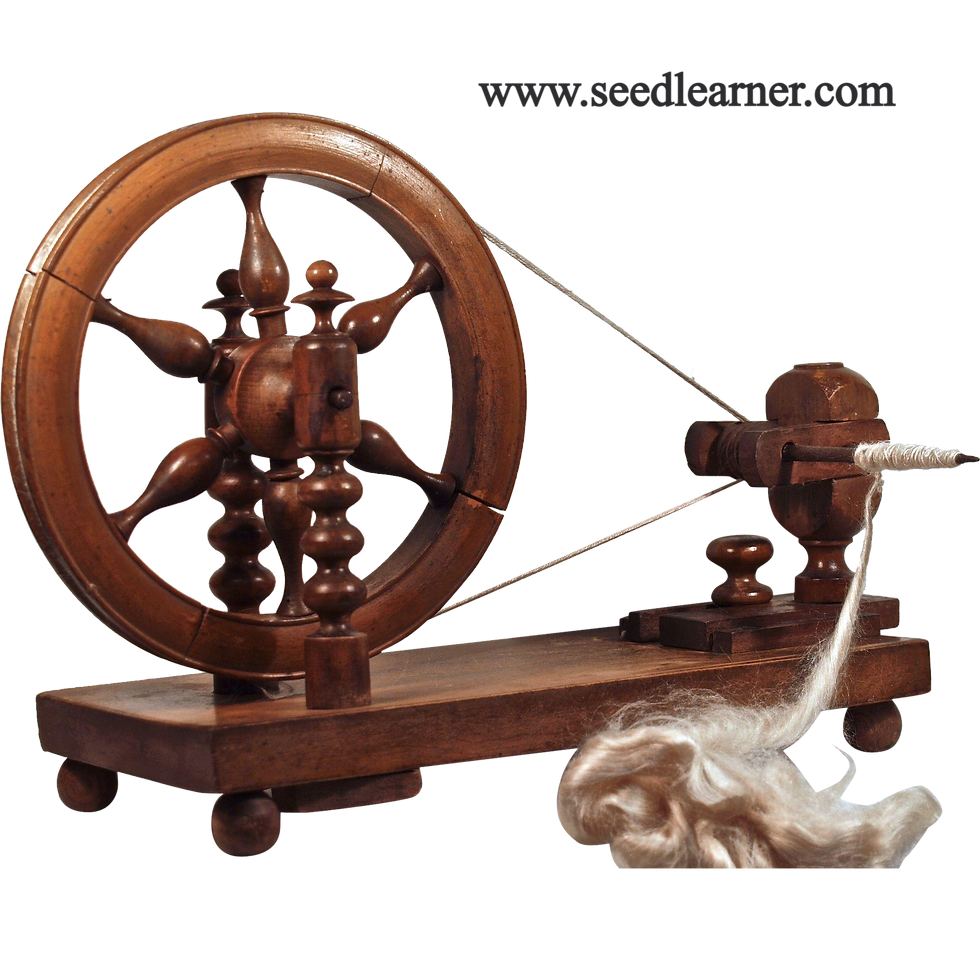
Earlier hand-spinning methods were superseded by mounting the spindle horizontally and rotating it by slowly turning a large wheel with the right hand.
The fiber was held at an angle in the operator's left hand to produce the necessary twist.
In 1733, John Kay invented the flying shuttle that enable the weaving process to become faster, and the Industrial revolution saw the process become increasingly mechanized.
Mahatma Gandhi’s manner of dress and commitment to hand spinning were essential elements of his philosophy and politics. He chose the traditional loincloth as a rejection of Western culture and a symbolic identification with the poor of India.
7. SCYTHE (1300 A.D):
This European invention increased productivity and liberated workers from the sickle.
The scythe is often ranked among the world's most significant advances in agricultural implements of the past thousand years. Its appearance on the farms of Europe in the latter half of the thirteenth century was to profoundly revolutionize agricultural production.
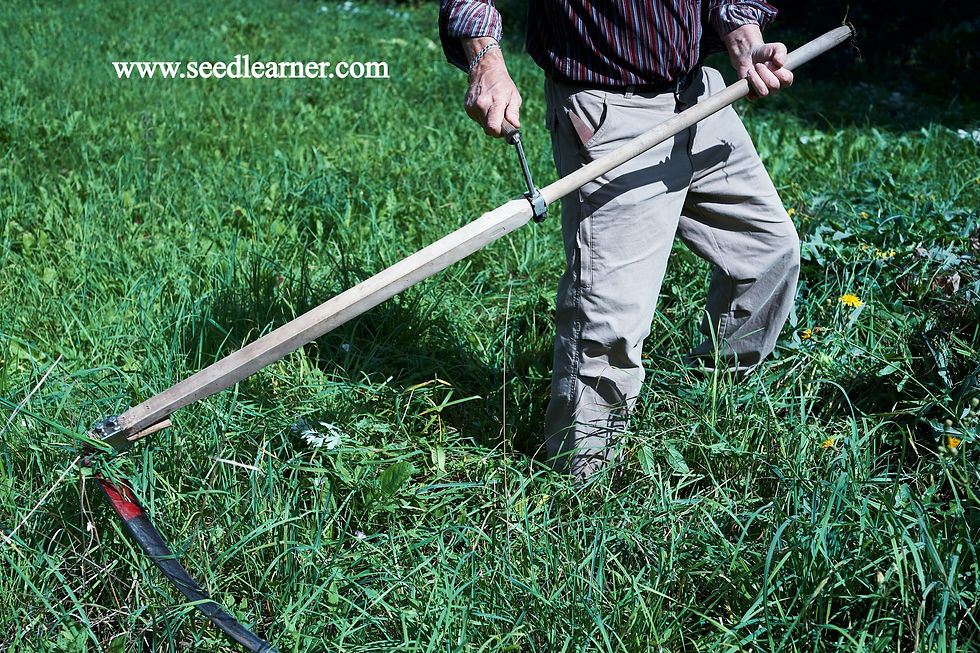
A worker using a sickle, which was essentially unaltered in design since its emergence in around 5000 B.C.E., could harvest at best only three-quarters of an acre, while using a scythe increased the production of grain harvesting to more than an acre per day.
Consisting of a curved blade, sharpened on the inside of the curve, and a long wooden handle (called a snath), the scythe allowed the reaper to stand upright while cutting the grass - a vast improvement over the short-bladed sickle, which required the user to stop uncomfortably as he/she cut.
A long, thin blade 90 to 100 centimeters (35 to 39 in) is most efficient for mowing grass or wheat, while a shorter, more robust scythe 60 to 70 centimeters (24 to 28 in) is more appropriate for clearing weeds, cutting reed or sedge and can be used with the blade under water for clearing ditches and waterways.
8. RAIN GAUGE (1441):
Jang Yeong-Sil measures rainfall.
People living in India began to record rainfall in 400 BCE. The readings were correlated against expected growth. In the Artha shastra, used for example in Magadha, precise standards were set as to grain production. Each of the state storehouses was equipped with a rain gauge to classify land for taxation purposes.

In 1441, the Yeong-sil was invented during the reign of Sejong the Great of the Joseon Dynasty of Korea as the first standardized rain gauge.
In 1662, Christopher Wren created the first tipping-bucket rain gauge in Britain in collaboration with Robert Hooke.
The pluviometer of intensities (or Jardi's pluviometer) is a tool that measures the average intensity of rainfall in a certain interval of time. It was initially designed to record the rainfall regime in Catalonia but eventually spread throughout the world.
9. SEED DRILL (1701):
Tull achieves eightfold productivity by transforming how seeds are sown.
In England, the seed drill was further refined by Jethro Tull in 1701 in the Agricultural Revolution. However, seed drills of this and successive types were both expensive and unreliable, as well as fragile. Seed drills would not come into widespread use in Europe until the mid to late 19th century, when manufacturing advances such as machine tools, die forging, and metal stamping allowed large-scale precision manufacturing of metal parts.

The seed drill sowed the seeds at the proper seeding rate and depth, ensuring that the seeds are covered by soil.
Early drills were small enough to be pulled by a single horse, and many of these remained in use into the 1930s. However, the availability of steam and later gasoline tractors saw the development of larger and more efficient drills that allowed farmers to seed ever larger tracts in a single day.
This innovation permitted farmers to have precise control over the depth at which seeds were planted. This greater measure of control meant that fewer seeds germinated early or late and that seeds were able to take optimum advantage of available soil moisture in a prepared seedbed.
A field planted using a seed drill is much more uniform, typically in rows, allowing weeding with a hoe during the growing season. Weeding by hand is laborious and inefficient. Poor weeding reduces crop yield, so this benefit is extremely significant.
10. Powdered Milk (1802):
Krichevsky invents a versatile food substitute.
The first modern production process for dried milk was invented by the Russian doctor Osip Krichevsky in 1802. It is made by drying or dehydrating milk until it forms a fine white powder. This can be achieved either by spraying a fine mist of milk into a heated chamber or by adding the milk in a thin layer to a heated surface, from which the dried milk solids can be scraped off.

Fat-free powdered milk is used as a saturating agent to block Non-Specific binding sites on supports like blotting membranes (nitrocellulose, Polyvinylidene fluoride (PVDF) or nylon), preventing binding of further detection reagents and subsequent background.
Powdered milk has found an additional use in modern science in a technique for separating proteins called western Blotting.
Freeze-drying is now used because it conserves more nutrients, and the milk can be fortified to improve its nutritional value.
11. Lawn Mower (1830):
Budding invents the machine that has come to symbolize suburban living.
Before the invention of the lawn mower, fine lawns were the exclusive preserve of those who could employ gardeners to scythe the grass. It was invented in 1830 by Edwin Beard Budding of England. Budding's mower was designed primarily to cut the grass on sports grounds and extensive gardens, as a superior alternative to the scythe, and was granted a British patent on August 31, 1830.

The Regent's Park Zoological Garden in London was an early adopter, using one in 1831. By 1860 lawn mowers were being manufactured in eight roller sizes, up to 36 inches (900 cm), and in 1859 Thomas Green produced the first chain-driven mower.
James Sumner patented the first steam-powered lawn mower in 1893. His machine burned petrol and/or paraffin as fuel. These were heavy machines that took several hours to warm up to operating pressure. After numerous advances, these machines were sold by the Stott Fertilizer and Insecticide Company of Manchester and Sumner. The company they both controlled was called the Leyland steam Motor company.
Lawnmowers produce GHG emissions. A minimum-maintained lawn management practice with clipping recycling, and minimum irrigation and mowing, is recommended to mitigate global warming effects from urban turfgrass systems.
12. Combine Harvester (1834):
Moore speeds up grain production.
Traditional grain harvesting was a laborious process, requiring separate cutting, binding, and threshing operations. The inventor Reverend Patrick Bell designed (but did not patent) a reaper machine, which used the scissors principle of plant cutting; a principle that is still used today. The Bell machine was pushed by horses. In 1835, in the United States, Hiram Moore built and patented the first combine harvester, which was capable of reaping, threshing, and winnowing cereal grain.

In 1835, Moore built a full-scale version with a length of 5.2 m (17 ft) and a cut width of 4.57 m (15 ft); by 1839, over 20 ha (50 acres) of crops were harvested. This combine harvester was pulled by 20 horses fully handled by farmhands.
Combine harvesters are one of the most economically important labor-saving inventions, significantly reducing the fraction of the population engaged in agriculture. Corn and wheat spelled big money in the 1800s, but farmers had to employ dozens of farmhands in order to reap the benefits of their harvests, and this way to a costly business.
Moore's invention, the machine essentially works in a two-step process; first, it harvests the corn, cutting the crop at the base with a sharp multibladed cylinder, then passing it inside the machine where it is threshed.
It took as many as sixteen horses to drag the heavy machinery of an early combine harvester across the fields, but the effort was worthwhile since it combined the work of several men over many hours into one simplified movement.
Steam engines were later used to ease the task, and more recently engine-powered combine harvesters have been developed, making the process of harvesting grain even more efficient.
13. ARTIFICIAL FERTILIZER (1839):
Von Liebig makes a scientific approach to maintaining soil fertility.
Until Justus Von Liebig investigated the continuance of soil fertility, agricultural fertilizer came in the form of animal dung, cinder, or ironmaking Slan. Being a chemist by training, rejected the hypothesis that plants gained all their nutrition from partially or completely decayed animal and vegetable matter in the soil, suggesting instead that plants gained carbon and nitrogen from carbon dioxide and ammonia in the atmosphere.

These gases would be plentiful supply since the process of decay would return the gases to the atmosphere, so the only nutrients supplied by the soil were minerals. Since these would be the limiting factor in the growth of crops, all a farmer had to do was determine which mineral each plant needed, to the analysis of its ashes, and provide the soil with the requisite chemical compounds.
There was a complex scientific understanding of plant nutrition, where the role of humus and organo-mineral interactions were central, and which was in line with more recent discoveries from 1990 onwards.
The initial experiments in this area were a failure as he had taken pains to add alkaline compounds in an insoluble form, which-while avoiding their being washed away by rain- also precluded they're being taken up by plant roots.
This work led directly to the development of artificial fertilizers and their widespread use in farming.
Unfortunately, the overuse of chemical fertilizers is now thought to have a widespread environmental impact, being held responsible for the accumulation of heavy metals in soil.
The leaching of nitrates into waterways leads to the process of eutrophication, causing a sudden growth of algae that removes the oxygen from the water, killing fish and plants.
14. PASTEURIZATION (1862):
Pasteur and Bernard destroy bacteria in milk.
At the beginning of the 1860s French chemist Louis Pasteur observed that living cells, known as yeast, were responsible for forming alcohol from sugar and, when contaminated, led to its souring. He was able to distinguish and separate this microorganism.
In 1862, He and another French physiologist Claude Bernard showed that most of the bacteria present in the milk could be killed if the milk was heated to 650C for thirty minutes.

The process is intended to destroy or deactivate microorganisms and enzymes that contribute to food spoilage or risk of disease, including vegetative bacteria, but most bacterial spores survive the process.
By the year 1999, most liquid products were heat treated in a continuous system where heat can be applied using a plate heat exchange or the direct or indirect use of hot water and steam. Due to the mild heat, there are minor changes to the nutritional quality and sensory characteristics of the treated foods. Pascalization or high-pressure processing (HPP) and pulsed electric field (PEF) are non-thermal processes that are also used to pasteurize foods.
According to a systematic review and meta-analysis, it was found that pasteurization appeared to reduce concentrations of vitamins B12 and E, but it also increased concentrations of vitamin A. Apart from meta-analysis, it is not possible to draw conclusions about the effect of pasteurization on vitamins A, B12, and E based merely on consultation of the vast literature available.
15. MILK/CREAM SEPARATOR:
Laval Speeds up cream extraction.
Before 1878, the separation of cream from milk occurred through nothing more than the force of gravity. This process took time and was also insufficient since it limited the amount of cream that could be processed from the milk.

The cream is formed when the lighter fat molecules of cream rise to the top of the milk through its heavier water-based fraction.
This process happens naturally in raw milk when it is left to settle for a period of at least twenty-four hours. The cream can then be skimmed off or the milk can be drained from underneath, leaving only the cream behind.
Fortunately, help was at hand for the dairy industry. Stockholm Institute of Technology graduate Carl Gustaf de Laval (1845-1913) has been experimenting with centrifugal as a way of separating fluids.
In 1878 he invented a steam-driven device that spun a raw milk sample at 4,000 revolutions per minute. Under the force exerted through the centrifugal effect of the device, the heavier fraction is spun toward the outside of the rotating vessel while the lighter cream is kept in the center.
Not only did Gustaf's machine extract cream faster than the conventional method, but it was also more efficient, leaving less than 0.1 percent of cream in the milk.
Laval's company, Alfa Laval, marketed the first commercially viable milking machine in 1918, five years after the inventor's death, but most importantly Laval invented a device that made making ice cream easier.
A distinction is made between warm milk skimming and cold milk skimming:
Warm milk skimming separator: The raw milk is first heated and then skimmed warm. There is a significant difference in density between cream and skimmed milk, because of the higher temperature.
Cold milk skimming separator: Because of the lower energy, which is used, the production cost will be reduced. Also at cold temperatures, the growth of microorganisms is significantly reduced. In the USA, Mexico, Australia, and New Zealand, cold milk skimming is on the rise.
16. LAWN/IRRIGATION SPRINKLER:
Oswald whets the appetite for gardening.
During the 19th century, the United States saw many people moving out of the city centers into the burgeoning suburbs. With more spaces, people began to develop an interest in cultivating gardens. The widespread introduction of city water systems also brought water to more homes.
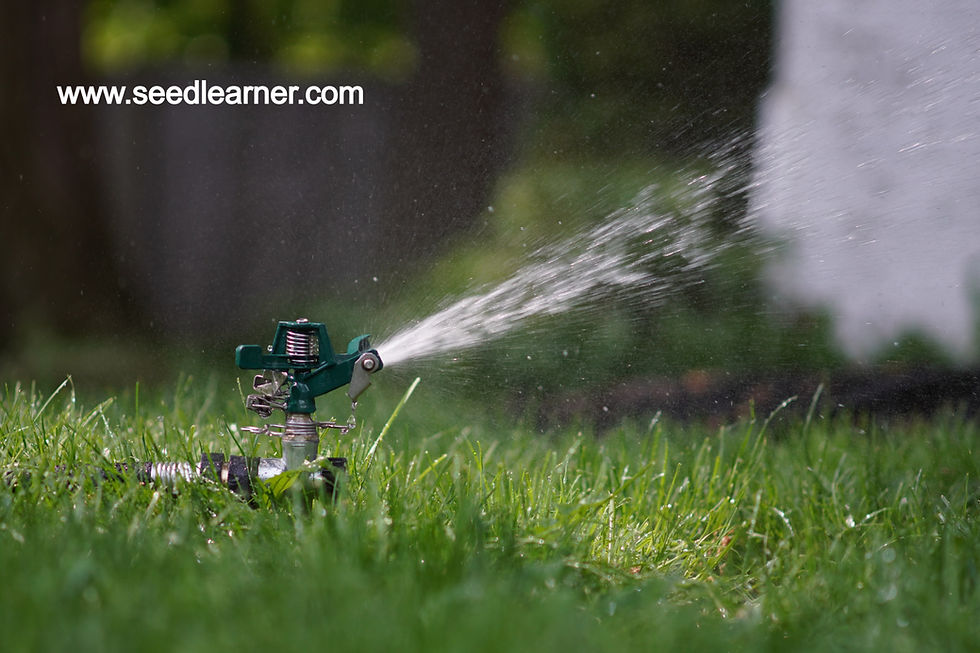
Sprinkler irrigation is the method of applying water in a controlled manner in a way similar to rainfall. The water is distributed through a network that may consist of pumps, valves, pipes, and sprinklers.
American Joseph Oswald's sprinkler was not the first to be patented and his application described it as making "improvements in lawn sprinklers".
Small portable sprinklers can be placed temporarily on lawns if additional watering is needed or if no permanent system is in place. These are often attached to an outdoor water faucet and are placed for a short period of time.
The first use of sprinklers by farmers was some form of home and golf course-type sprinklers. These ad hoc systems, while doing the job of the buried pipes and fixed sprinkler heads, interfered with cultivation and were expensive to maintain.
17. BREAKFAST CEREAL:
Kellogg's invent a popular breakfast food.
Cornflakes were invented by accident in 1894 by John Harvey Kellogg (1852-1943) and his brother Will Keith Kellogg (1860-1943).
A group of Seventh-day Adventists, including the Kellogg brothers, were trying to develop new foods to conform to a strict vegan diet, in the belief that this was beneficial to health.

On one occasion, the Kellogg brothers left some cooked wheat to attend to something else, and when they returned to wheat had dried out. Not wanting to waste it, they pressed the wheat with rollers to try and make flat dough. But the grains turned into flakes, which the brothers then toasted.
The flakes, served with milk and marshmallows, proved popular with the sanatorium guests.
Patenting their invention as "Granose", the brothers founded the Battle Creek Toasted Corn Flake Company, led by Will Kellogg.
18. SELF-HEATING FOOD CAN: (1899)
An unknown inventor makes hot food on the go possible.
Thanks to some unknown inventor, Self-heating cans first appeared around 1900 for use by mountaineers and explorers. The most common versions involve a can with two chambers - One for the food and one for the heating unit.
The heat is generated by an exothermic (heat-producing) chemical reaction between Calcium oxide(quicklime) and water.
CaO(s)+ H2O(l) → Ca (OH)2(s)
Copper sulfate and powdered Zinc can also be used, but this process is less efficient:
CuSO4(s) + Zn(s) → ZnSO4(s) + Cu(s)
The can is manufactured as a triple-walled container. A container for the beverage is surrounded by a container of the heating agent separated from a container of water by a thin breakable membrane. When the user pushes on the bottom of the can, a rod pierces the membrane, allowing the water and heating agent to mix.
During World War II, Heinz manufactured self-heating beverages with a cordite stick down the center that heated the contents when lit, but they were not always reliable.
19. INSTANT COFFEE (1901):
Kato invents the quick caffeine fix.
The cultivation of coffee beans can be traced back to tenth-century Ethiopia.
It was introduced to Europe in the sixteenth century and the Americas in the mid-1600s, after which it proved an extremely popular beverage. But preparing it correctly, brewed from ground coffee beans, could be time-consuming.

It was not until 1901 that a Japanese -American chemist named Satori Kato, using an earlier process he pioneered for making instant tea created the world's first soluble instant coffee.
Kato's coffee, which he called "Sanka", through initially bitter and pungent, was a concentrated solution made from coffee beans and water that was dehydrated leaving a powdery residue, which dissolves easily in hot water.
While living in Guatemala in 1909, Belgian-born chemist George C Washington was the first to market mass-produced coffee with his " Red E Coffee" brand, after observing dried coffee forming on the spouts of the coffee pots. It dominated the instant coffee market in the United States for the next thirty years.
To produce instant coffee, the soluble and volatile contents of the beans, which provide the coffee aroma and flavor, have to be extracted. This is done using water. Pressurized water heated to around 175 °C (347 °F) is used for this process. The coffee concentration in the liquid is then increased by either evaporation or by freeze concentration.
20. TEA BAG (1903):
Sullivan accidentally discovers a way to brew an instant cup of Tea.
Eager to boost orders for his teas, New York tea merchant Thomas Sullivan devised a new method of distributing samples of tea to his customers.
He stitched them into small silk muslin bags, making them easy to ship and less messy for the recipient to unpack.

Some customers did not bother opening the cloth bag and simply poured boiling water over them.
Sullivan was inundated with orders for more tea packaged in this way. Responding to suggestions that the silk mesh was too fine, Sullivan used cotton gauze instead and began to sell the bags commercially.
The heat-sealed paper fiber tea bag was patented in 1930 by William Hermanson. The now-common rectangular tea bag was not invented until 1944. Prior to that, tea bags resembled small sacks.
By the 1970s, Tea bags were also being used for herbal teas. Tea bag technology continues to develop, with new tea bag shapes to increase the effectiveness of the infusion process, such as the pyramid, and to attract the interest of tea-drinker.
21. FOOD MIXER (1908):
Beach speeds up kitchen tasks with a lightweight motor.
Chester Beach grew up on a Wisconsin farm, and it was there that his natural aptitude for repairing and fixing machinery was nurtured. He met his future business partner L.H. Hamilton when they were both working at an electric motor company in Wisconsin in the early 1900s.
The motor was able to safely and consistently achieve up to 7,200 revolutions per minute and its ability to run on both AC and DC meant that it was extremely adaptable.
22. ROTAVATOR (1912):
Howard develops a motorized rotary tiller.
Man has cultivated the Earth for thousands of years, and for a large portion of that time he has been "tilling"- turning the soil to bury weeds and in fertilizer - in order to grow crops.
Tillage, and agriculture in general, took a big step towards modern intensive processes when Australian inventor Arthur Clifford (cliff) Howard (1893-1971) created the motorized tiller- the Howard Rotovator - in 1912.

He began experimenting with rotary tillage on his father's farm at Gil Gandra, New South Wales, Australia. Initially using his father's steam tractor engine as a power source, he found that ground could be mechanically tilled without soil-packing occurring, as was the case with normal plowing. His earliest designs threw the tilled soil sideways until he improved his invention by designing an L-shaped blade mounted on widely spaced flanges fixed to a small-diameter rotor. With fellow apprentice Everard McCleary, he established a company to make his machine, but plans were interrupted by World War I.
In 1919 Howard returned to Australia and resumed his design work, patenting a design with 5 rotary hoe cultivator blades and an internal combustion engine in 1920.
Today rotavators are commonly used for soil preparation and are essential for maintaining the high yields of intensive modern agriculture.
23. FAST-FROZEN FOODS (1924):
Birdseye freezes foods more quickly to preserve them in optimum condition.
In 1912 Clarence Birdseye (1886-1956) was working as a field biologist in northern Canada when he was taught by Inuit people how to preserve fish by freezing under very thick ice at around -400 F .
Frozen almost instantly, it tasted fresh when thawed days or weeks later. Birdseye realized that the fish was fresher than sold in the fish markets in New York, which had also been frozen but slowly and at higher temperatures.
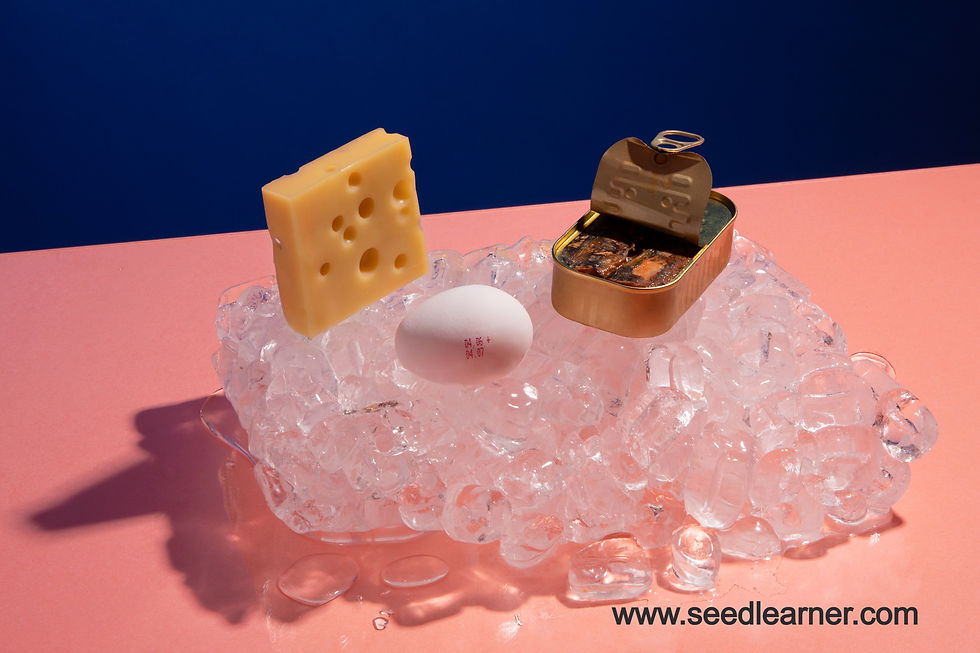
He also saw that when food was frozen quickly, only small ice crystals formed in the cells, causing less damage to the texture.
Frozen food will keep for several months, so long as it is stored at a constant temperature no higher than -18 degrees Celsius.
His double-belt freezer, patented in 1925, used brine to chill a pair of stainless-steel belts carrying the fish so that it has frozen extremely quickly.
Meat and vegetables could be prepared and frozen using the same technique. Birdseye sold his company and its many patents in 1929 for USD 22 million to Goldman Sachs and the Postum Company, which became the General Foods Corporation and introduced the Birds Eye brand to the world.
24. BIODIESEL (1937):
Chavanne transforms vegetable oil into fuel.
Biodiesel, technically described as mono-alkyl esters of vegetable oil or animal fat, is to many a new concept in man's quest to rely less on petroleum-based products in daily life.
The first biodiesel, however, was produced in the lab decades ago and is still cited as an important technological advance in the area of alternative fuel sources.
The name biodiesel originates from the word diesel, a type of engine invented by Rudolph Diesel in 1892.
Diesel first displayed his invention in 1900, at the Paris World's Fair. Rather unexpectedly, his diesel engine actually ran on peanut oil.
On 31 August 1937, G. Chavanne of the University of Brussels (Belgium) was granted a patent for a "Procedure for the transformation of vegetable oils for their uses as fuels" (fr. "Procédé de Transformation d’Huiles Végétales en Vue de Leur Utilisation comme Carburants") Belgian Patent 422,877.
This patent described the alcoholysis (often referred to as transesterification) of vegetable oils using ethanol (and mentions methanol) in order to separate the fatty acids from the glycerol by replacing the glycerol with short linear alcohols. This appears to be the first account of the production of what is known as "biodiesel" today.
To know more on Biodiesel - What are the Bio fuels? (seedlearner.com)
25. Gel Electrophoresis (1955):
Smithies discovers a molecular sieve.
Oliver Smithies, a scientist working at the University of Toronto in the 1950s, discovered a way for scientists to separate proteins quickly and easily by their size, using potato starch to create a type of microscopic sieve.
Smithies, who was one of three scientists sharing the Nobel prize for Physiology or Medicine, was looking for a way to separate insulin from its precursor when he developed starch-gel-electrophoresis.
Using the potato starch, smithies created a gel that allowed proteins to be separated by size. He found that the best potato starch came from powder production in Canada.
The powder was used as a matrix in the gel. The proteins were applied to the gel and exposed to an electric charge, which allowed them to migrate through the matrix of potato starch. The starch acted as a sieve and enabled scientists to see the size separation of the proteins that they were studying.
Today, gel electrophoresis equipment is much more streamlined, but the simple sieve idea that smithies discovered still forms the basis of protein separation.
BY
K H AKHIL SRINIVAS (KHAS).
.jpeg)

Comments